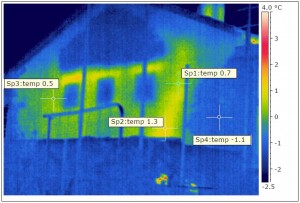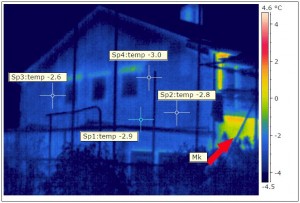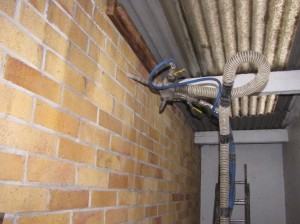At the beginning of December, not long before the cavity wall insulation was injected, I took the opportunity to take some thermal images of the house. As the image above left shows, we had a significant amount of heat loss through the cavity. Warm air (shown yellow/ green) was entering the cavity and escaping at high level.
I carried out another survey earlier this week (cavity wall insulation has now been injected – see earlier post). The image above right shows the same north gable wall. There are no yellow/green areas at all, which suggests that the cavity fill has significantly reduced the air movement within the cavity. This is the primary purpose for the cavity fill, otherwise the external wall insulation (to be fitted shortly) will be less effective.
The area highlighted by a red arrow indicates an area of higher heat loss at the front of the house (you may need to click on the image to enlarge it). This area is a small solid wall section and again illustrates the the effectiveness of the cavity wall insulation elsewhere. More images to analyse and post later.
One final thing for now on cavity wall… we had the opportunity to look into the cavity again as we are changing the aperture of one of the windows. The ecobead insulation again beats my expectations and has completely filled the entire cavity:






